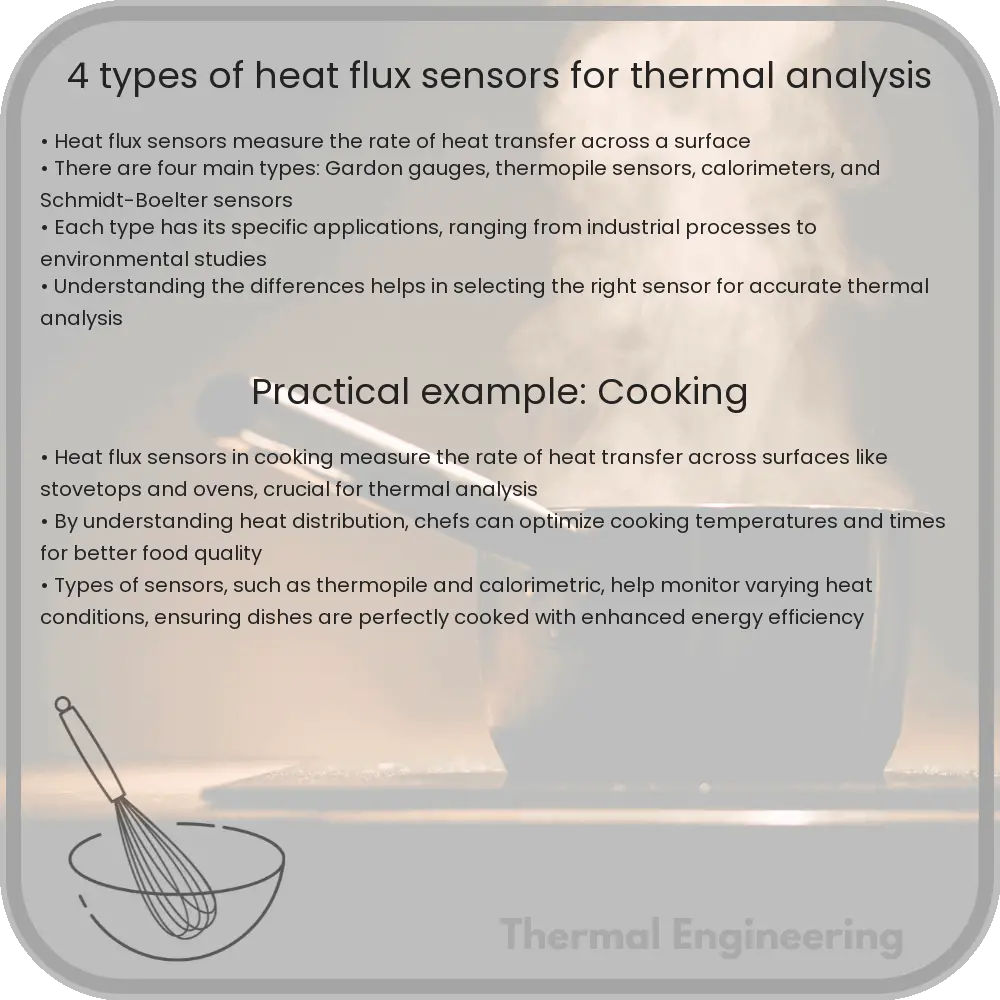Learn about heat flux sensors, essential tools in thermal analysis used to measure heat transfer rates across surfaces in various applications.

Understanding Heat Flux Sensors: Types and Applications
Heat flux sensors are essential devices used in thermal analysis to measure the rate of heat transfer through a surface per unit area. These sensors are crucial in various fields, including engineering, environmental studies, and material sciences, providing data needed to analyze thermal properties and behaviors. This article explores four primary types of heat flux sensors commonly used for different thermal analysis applications.
1. Gardon Gauge Sensors
Gardon gauges, also known as circular foil gauges, consist of a thin metallic circular foil attached to an insulating material. Heat flux is deduced by measuring the temperature difference across the foil. The sensor is calibrated so that the heat flux (\(q\), measured in W/m2) is proportional to the measured temperature difference (\(\Delta T\)) as given by the equation:
\[ q = K \times \Delta T \]
where \( K \) is the calibration constant specific to the sensor. Gardon gauges are especially useful in applications with high heat fluxes, such as in combustion research or heat transfer studies in engines.
2. Schmidt-Boelter Sensors
Schmidt-Boelter sensors are widely recognized for their accuracy and dynamic response. Similar to Gardon gauges, they measure the heat flux based on the temperature difference across a thermally conductive foil. However, their design, typically a water-cooled body with thermocouple junctions, allows for more precise measurements under varying environmental conditions. These sensors are particularly effective in environments where the heat flux is moderate to high, such as in fire safety testing and meteorological research.
3. Thermopile Heat Flux Sensors
Thermopile sensors use several thermocouple junctions connected in series or parallel to convert a temperature difference across the sensor into an electrical voltage. This voltage output is then used to calculate the heat flux. Thermopile sensors are known for their sensitivity and are suitable for a wide range of applications, from studying human skin’s response to heat to solar panel evaluations. The general principle of operation is shown below:
\[ V = S \times \Delta T \]
where \( V \) is the voltage generated, \( \Delta T \) is the temperature difference, and \( S \) is the Seebeck coefficient of the material used.
4. Heat Flux Microsensors (HFM)
Heat Flux Microsensors are miniaturized devices that offer high resolution and quick response times. HFMs often employ a thin-film thermopile that absorbs heat and generates a voltage proportional to the heat flux. These sensors are extremely useful in microscale heat transfer applications, such as in integrated circuits or small-scale energy systems studies, where precise measurement of localized heat flux is critical.
Conclusion
Choosing the correct type of heat flux sensor depends on several factors including the expected range of heat fluxes, environmental conditions, and required sensitivity. By understanding the functional principles and applications of these sensors, engineers and researchers can better design experiments and systems to accurately measure and analyze heat transfer, ultimately improving performance and efficiency across various applications.